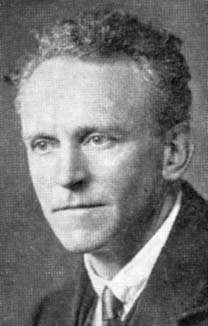Duncan Sommerville
| Duncan M. Y. Sommerville | |
|---|---|
|
Duncan Sommerville | |
| Born |
24 November 1879 Beawar, Rajputana, India |
| Died |
31 January 1934 Wellington, New Zealand |
| Residence | New Zealand |
| Citizenship | United Kingdom |
| Nationality | Scottish |
| Fields | Mathematics |
| Institutions |
St Andrews University (1904–13) Wellington University (1913–34) |
| Alma mater | St Andrews University |
| Known for | Textbooks on geometry |
Duncan MacLaren Young Sommerville FRSE FRAS (1879–1934) was a Scottish mathematician and astronomer. He compiled a bibliography on non-Euclidean geometry and also wrote a leading textbook in that field. He also wrote Introduction to the Geometry of N Dimensions, advancing the study of polytopes. He was a co-founder and the first secretary of the New Zealand Astronomical Society.
Sommerville was also an accomplished watercolourist, producing a series of works of the New Zealand landscape.
The middle name 'MacLaren' is spelt using the old orthography M'Laren in some sources, for example the records of the Royal Society of Edinburgh.[1]
Early life
Sommerville was born in Beawar, India where his father was employed as a missionary doctor by the United Presbyterian Church of Scotland. The Rev Dr James Sommerville had been responsible for establishing the hospital at Jodhpur, Rajputana.
The family returned home to Scotland, where Duncan first spent 4 years at a private school in Perth, before being sent to Perth Academy. He then studied at the University of St Andrews in Fife, where in 1905 he was awarded Doctor of Science for his thesis, Networks of the Plane in Absolute Geometry. Sommerville taught at St. Andrews from 1902 to 1914.
In projective geometry the method of Cayley–Klein metrics had been used in the 19th century to model non-euclidean geometry. In 1910 Duncan wrote "Classification of geometries with projective metrics".[2] The classification is described by Daniel Corey[3] as follows:
- He classifies them into 9 types of plane geometries, 27 in dimension 3, and more generally 3n in dimension n. A number of these geometries have found applications, for instance in physics.
In 1910 Sommerville reported[4] to the British Association on the need for a bibliography on non-euclidean geometry, noting that the field had no International Association like the Quaternion Society to sponsor it.
In 1911 Sommerville published his compiled bibliography of works on non-euclidean geometry, and it received favorable reviews.[5][6] In 1970 Chelsea Publishing issued a second edition which referred to collected works then available of some of the cited authors.[7]
Sommerville was elected a Fellow of the Royal Society of Edinburgh in 1911. The following year he married Louisa Agnes Beveridge.
Work in New Zealand

In 1915 Sommerville went to New Zealand to take up the Chair of Pure and Applied Mathematics at the Victoria College of Wellington.
Duncan became interested in honeycombs and wrote "Division of space by congruent triangles and tetrahedra" in 1923.[8] The following year he extended results to n-dimensional space.[9]
He also discovered the Dehn–Sommerville equations for the number of faces of convex polytopes.
Sommerville used geometry to describe the voting theory of a preferential ballot.[10] He addressed Nanson's method where n candidates are ordered by voters into a sequence of preferences. Sommerville shows that the outcomes lie in n ! simplexes that cover the surface of an n − 2 dimensional spherical space.
When his Introduction to Geometry of N Dimensions appeared in 1929, it received a positive review from B. C. Wong in the American Mathematical Monthly.[11]
Sommerville was co-founder and first secretary of the New Zealand Astronomical Society (1920). He was President of Section A of the Australasian Association for the Advancement of Science meeting, Adelaide (1924). In 1926 he became a fellow of the Royal Astronomical Society.
Textbooks
- 1914: The Elements of Non-Euclidean Geometry, William P. Milne editor, Bell's Mathematical Series for Schools and Colleges, G. Bell & Sons.
- The Elements of Non-Euclidean Geometry, link from University of Michigan Historical Math Collection.
- 1930: An Introduction to the Geometry of N Dimensions, New York, E. P. Dutton, (Dover Publications edition, 1958)
- 1933: Analytical Conics from Google Books
- 1934: Analytical Geometry of Three Dimensions. Cambridge University Press.
References
- ↑ Waterston, Charles D; Macmillan Shearer, A (July 2006). Former Fellows of the Royal Society of Edinburgh 1783–2002: Biographical Index (PDF). II. Edinburgh: The Royal Society of Edinburgh. ISBN 978-0-902198-84-5. Retrieved 5 February 2011.
- ↑ Proceedings of the Edinburgh Mathematical Society 28:25–41
- ↑ MR 550670
- ↑ D. Sommerville (1910) On the Need of a Non-Euclidean Bibliography, Report of the British Association
- ↑ G. B. Halsted (1912) "Duncan M.Y. Sommerville", American Mathematical Monthly 19:1–4, includes portrait, MR 1517626
- ↑ G. B. Mathews (1912) Bibliography of Non-Euclidean Geometry from Nature 89:266 (#2220)
- ↑ MR 270890
- ↑ Proceedings of the Royal Society of Edinburgh 43:85–116
- ↑ D. Sommerville (1924) "The regular divisions of space of n dimensions and their metrical constants", Rendiconti del Circolo Matematico di Palermo 48:9–22
- ↑ D. Sommerville (1928) "Certain hyperspatial partitionings connected with preferential voting", Proceedings of the London Mathematical Society 28(1):368 to 82
- ↑ B.C. Wong (1931) "Recent publications", American Mathematical Monthly 38(5):286–7
- H.W. Turnbull (1934) "Duncan M. Y. Sommerville", Journal of the London Mathematical Society 9(4):316–18.
- B. A. Rosenfeld (1979) "The Works on Geometry of Duncan Sommerville", Istoriko-Matematicheskie Issledovania, MR 550670.
External links
- O'Connor, John J.; Robertson, Edmund F., "Duncan Sommerville", MacTutor History of Mathematics archive, University of St Andrews.
- Obituary, Monthly Notices of the Royal Astronomical Society Vol. 95, pp. 330–331.
- C.J. Seelye (1974) Mathematics At Victoria In Retrospect, Notes for a talk to the Mathematics and Physics Society, from NZETC.
